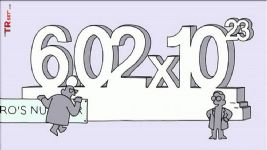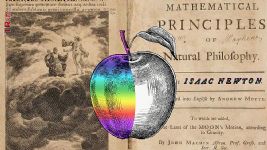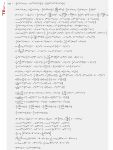- TRSET
What is the longest physics equation? What is the longest equation ever?
What is the hardest equation in physics? How does 3X 1 work? What is the answer to x3 y3 z3
What is the longest theorem? What is the smartest equation?
+ index service
+ TR Search Engine Technology

The model Lagrangian is a mathematical expression that summarizes the Standard Model of particle physics, which is the most successful theory of the fundamental interactions between elementary particles. It is composed of four different parts, each describing a different aspect of the Standard Model.
The model Lagrangian is written in a compact notation that uses symbols and operators from quantum field theory, such as covariant derivatives, field strength tensors, Dirac matrices, and gauge group generators. It also uses various constants and parameters that are determined by experiments, such as coupling constants, masses, and mixing angles.
It is one of the longest equations in physics because it contains many terms and factors that account for all the possible interactions and symmetries of the Standard Model.
It was transcribed by Thomas Gutierrez who derived it from Martinus Veltman's Diagrammatica: The Path to Feynman Diagrams.

-

 Gökkuşağı Nasıl Oluşur?
Gökkuşağı Nasıl Oluşur? -

 Mol nedir? Avogadro nedir? Herkes için anlaşılır kimya konuları.
Mol nedir? Avogadro nedir? Herkes için anlaşılır kimya konuları. -

 Avukat - Meslek Tanıtımı
Avukat - Meslek Tanıtımı -

 Çocuk Eğitiminde Disiplin ve Öz Denetimi Sağlama Yolları
Çocuk Eğitiminde Disiplin ve Öz Denetimi Sağlama Yolları -

 Salad Recipe
Salad Recipe -

 Çocuklarla İletişim Önerileri
Çocuklarla İletişim Önerileri -

 Asal Sayılar ve Sakladığı Sırlar
Asal Sayılar ve Sakladığı Sırlar -

 Gestalt Kuramı
Gestalt Kuramı -

 Sağlıklı Aile İçi İletişim Önerileri
Sağlıklı Aile İçi İletişim Önerileri -

 Üniversite Öncesi Son Öğretim Yılında Öğrencileri Neler Bekliyor?
Üniversite Öncesi Son Öğretim Yılında Öğrencileri Neler Bekliyor? -

 Bulunmaz Hint Kumaşı Nedir?
Bulunmaz Hint Kumaşı Nedir? -

 Isaac NEWTON
Isaac NEWTON -

 Çocuklara Yardımlaşma Bilinci Nasıl Kazandırılır?
Çocuklara Yardımlaşma Bilinci Nasıl Kazandırılır? -

 Protista Alemi
Protista Alemi -

 PASS Teorisi Nedir?
PASS Teorisi Nedir? -

 Visseral Yağlanma - İç Organ Yağlanması Nasıl Giderilir?
Visseral Yağlanma - İç Organ Yağlanması Nasıl Giderilir? -

 Saint Virgins Menodora, Metrodora, and Nymphodora
Saint Virgins Menodora, Metrodora, and Nymphodora -

 Hayvanlar Alemi Sunumu
Hayvanlar Alemi Sunumu








 Share This Page
Share This Page WhatsApp CH
WhatsApp CH Twitter
Twitter YouTube
YouTube Linked in
Linked in Instagram
Instagram Facebook
Facebook Deutsch
Deutsch